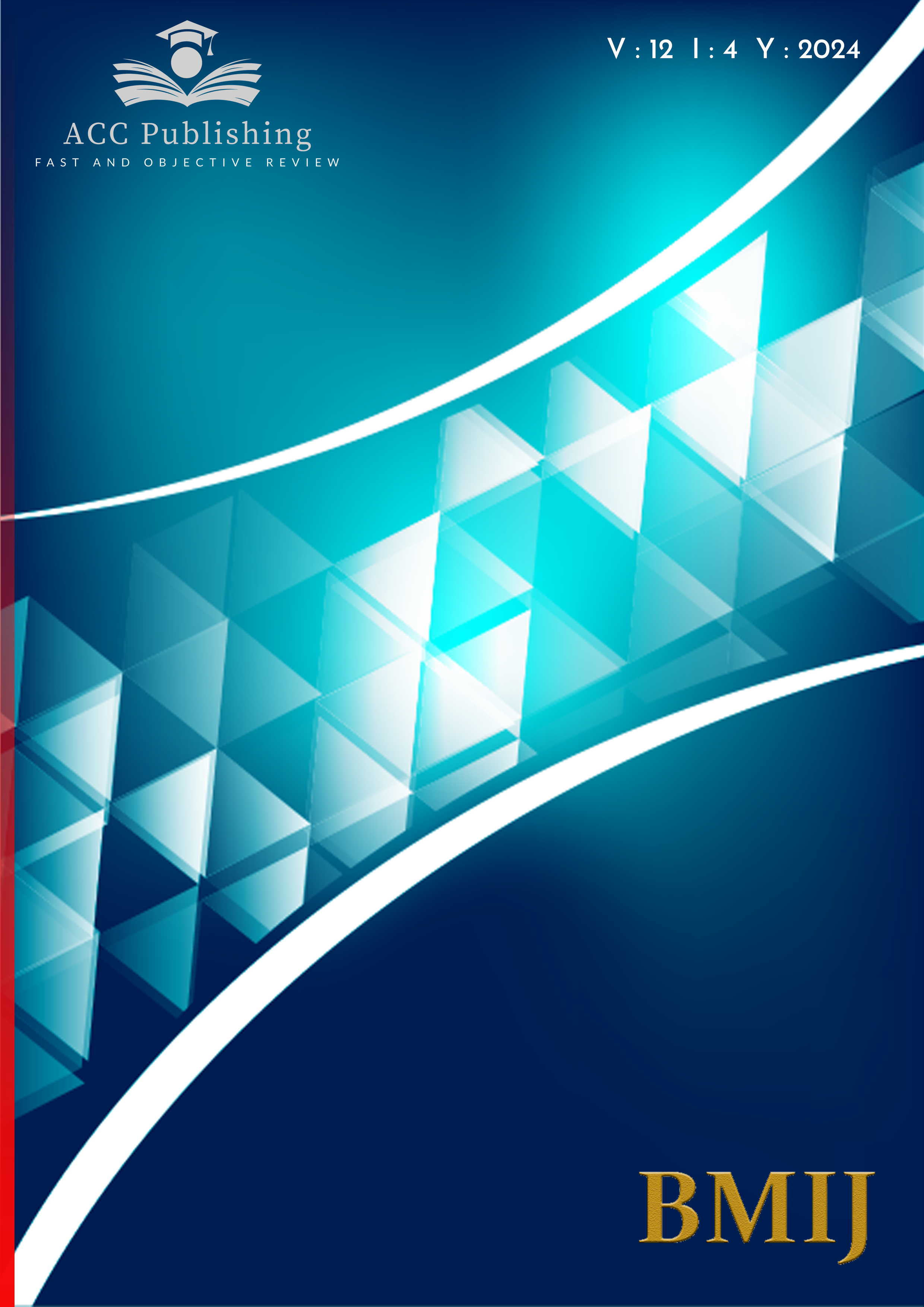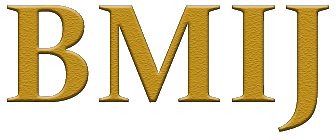Tedarik zincirlerinde dinamik yetenekler ile sürdürülebilir inovasyon performansı arasındaki ilişki ve dinamik yeteneklerin öncülleri

Yayınlanmış 25.12.2024
Anahtar Kelimeler
- Dinamik Yetenekler, Sürdürülebilir İnnovasyon Performansı, Tedarik Zinciri
- Dynamic Capabilities, Sustainable Innovation Performance, Supply Chain
Nasıl Atıf Yapılır
Telif Hakkı (c) 2024 Hülya Uzun- Ali Çağrı Buran

Bu çalışma Creative Commons Attribution-NonCommercial-NoDerivatives 4.0 International License ile lisanslanmıştır.
Nasıl Atıf Yapılır
Öz
Bu araştırmanın temel amacı Türkiye'deki sanayi işletmelerinin tedarik zincirlerinde dinamik yetenekler ile sürdürülebilir inovasyon performansı arasındaki ilişkiyi ortaya koymaktır. Ayrıca çalışma kapsamında dinamik yetenekleri etkileyen iç ve dış unsurların belirlenmesi amaçlanmıştır. Bu doğrultuda bu çalışma kapsamında tedarik zinciri dinamik yetenekleri ile tedarik zinciri sürdürülebilir yenilikçi performansı arasındaki ilişki, sürdürülebilirliğin çevresel, sosyal ve ekonomik boyutları dikkate alınarak incelenmiştir. Öte yandan çalışma kapsamında iç ve dış faktörler olarak organizasyon yapısı ve çevresel dinamizmin tedarik zinciri dinamik yetenekleri üzerindeki etkisinin belirlenmesi amaçlanmıştır. Bu amaçla İstanbul Sanayi Odası'nın (İSO) 2022 yılı için belirlediği beş yüz büyük sanayi kuruluşu arasında, tedarik zincirlerinde ana üretici konumunda olan hem ciro hem de ihracat açısından Türkiye'deki üretim işletmelerini temsil edebilecek nitelikte olan 233 işletme, uygulama alanı olarak seçilmiştir. Çevrimiçi anket formu 233 işletmeye gönderilmiş ve 151 kullanılabilir anket formu elde edilmiştir. Teorik modeli test etmek için En Küçük Kareler Yapısal Eşitlik Analizi (PLS-SEM) kullanılmış ve veriler SmartPLS 4 paket programı kullanılarak analiz edilmiştir.
Referanslar
- Adams, R., Jeanrenaud, S., Bessant, J., Denyer, D., and Overy, P. (2016). Sustainability‐oriented innovation: A systematic review. International Journal of Management Reviews, 18(2), 180-205. doi:10.1111/ijmr.12068
- Ahmadi, H.B., Pamucar, D., Pourhejazy, P., Kaya, S.K., and Liou, J.J. (2023). An integrated approach for assessing suppliers considering economic sustainability innovation. IEEE Access 11, 39675-39694. doi:10.1109/access.2023.3268438
- Albort-Morant, G., Leal-Millán, A., and Cepeda-Carrión, G. (2016). The antecedents of green innovation performance: A model of learning and capabilities. Journal of Business Research, 69(11), 4912-4917. doi: 10.1016/j.jbusres.2016.04.052
- Ali, M.A., Hussin, N., Haddad, H., Alkhodary, D., and Marei, A. (2021). Dynamic capabilities and their impact on intellectual capital and innovation performance. Sustainability, 13(18), 10028. doi: 10.3390/su131810028
- Alzate, I., Manotas, E., Boada, A., and Burbano, C. (2022). Meta-analysis of organisational and supply chain dynamic capabilities: A theoretical-conceptual relationship. Problems and Perspectives in Management, 20(3), 335-349. doi:10.21511/ppm.20(3).2022.27
- Ambrosini, V., and Bowman, C. (2009). What are dynamic capabilities and are they a useful construct in strategic management?. International Journal of Management Reviews, 11(1), 29-49. doi:10.1111/j.1468-2370.2008.00251.x
- Andrews, R. (2010). Organisational social capital, structure and performance. Human Relations, 63(5), 1-26. doi:10.1177/0018726709342931
- Ansari, R., Barati, A., and Sharabiani, A.A.A. (2016).The role of dynamic capability in intellectual capital and innovative performance. International Journal of Innovation and Learning, 20(1), 47-67. doi:10.1504/IJIL.2016.076671
- Armstrong, O.E., and Rasheed, A. (2013). Structural dimensions and functions of structure influencing agribusiness enterprises: Mechanistic vs organic systems approach. IOSR Journal of Business and Management, 6(6), 1-63.
- Barreto, L. S., Freitas, V. and de Paula, V.A.F. (2024). Sustainable supply chain innovation and market performance: The role of sensing and innovation capabilities. Cleaner and Responsible Consumption. doi:10.1016/j.clrc.2024.100199
- Bocken, N.M.P., Short, S.W., Rana, P., and Evans, S. (2014). A literature and practice review to develop sustainable business model archetypes. Journal of Cleaner Production, 65, 42–56. doi:10.1016/j.jclepro.2013.11.039
- Burns, T., and Stalker, G.M. (2016). The management of innovation, Oxford University Press. New York.
- Calik, E., and Bardudeen, F. (2016). A measurement scale to evaluate sustainable innovation performance in manufacturing organisations. Procedia Cirp, 40, 449-454. doi:10.1016/j.procir.2016.01.091
- Capron, L., and Mitchell, W. (2009). Selection capability: How capability gaps and internal social frictions affect internal and external strategic renewal. Organization Science, 20(2), 294-312. doi:10.1287/orsc.1070.0328
- Cavusgil, E., Seggie, S.H., and Talay, M.B. (2007). Dynamic capabilities view: Foundations and research agenda. Journal of Marketing Theory and Practice, 15(2), 159-166. doi: 10.2753/mtp1069-6679150205
- Cecere, G., Corrocher, N., and Mancusi, M.L. (2016). Financial constraints and public funding of eco-innovation: Empirical evidence from European SMEs. Small Business Economics, 54, 285-302.
- Chan, H.K., Yee, R.W., Dai, J., and Lim, M.K. (2016). The moderating effect of environmental dynamism on green product innovation and performance. International Journal of Production Economics, 181, 384-391. doi:10.1016/j.ijpe.2015.12.006.
- Chang, H.L. (2011). Developing supply chain dynamic capability to realise the value of Inter-Organisational Systems. International Journal of Internet and Enterprise Management, 7(2), 153-171.
- Chen, R. (2024). Sustainable supply chain management as a strategic enterprise innovation. Advances in Economics, Management and Political Sciences, 85, 24-29. doi:10.54254/2754-1169/85/20240831
- Chuan, C. L., and Penyelidikan, J. (2006). Sample size estimation using Krejcie and Morgan and Cohen statistical power analysis: A comparison. Jurnal Penyelidikan IPBL, 7(1), 78-86.
- Cohen, J. (1988). Statistical power analysis for the behavioural sciences, Lawrence Erlbaum, Mahwah, NJ.
- Dalton, D.R., Todor, W.D., Spendolini, M.J., Fielding, G.J., and Porter, L.W. (1980). Organisation structure and performance: A critical review. Academy of Management Review, 5(1), 49-64.
- Damanpour, F. (1991). Organisational innovation: A meta-analysis of effects of determinants and moderators. Academy of Management Journal, 34(3), 555-590
- Dangelico, R.M., Pujari, D., and Pontrandolfo, P. (2017). Green product innovation in manufacturing firms: A sustainability-oriented dynamic capability perspective. Business Strategy and the Environment, 26(4), 490-506. doi: 10.1002/bse.1932
- Daugherty, P.J., Chen, H., and Ferrin, B.G. (2011). Organisation structure and logistics service innovation. The International Journal of Logistics Management, 22(1), 26-51.
- De Jesus Pacheco, D. A., ten Caten, C. S., Jung, C. F., Navas, H. V. G., and Cruz-Machado, V. A. (2018). Eco-innovation determinants in manufacturing SMEs from emerging markets: Systematic literature review and challenges. Journal of Engineering and Technology Management, 48, 44-63. doi:10.1016/j.jengtecman.2018.04.002
- De Jesus, A., and Mendonça, S. (2018). Lost in transition? Drivers and barriers in the eco-innovation road to the circular economy. Ecological Economics, 145, 75-89. doi:10.1016/j.ecolecon.2017.08.001
- Defee, C.C., and Fugate, B.S. (2010). Changing perspective of capabilities in the dynamic supply chain era. The International Journal of Logistics Management, 21(2), 180-206. doi:10.1108/09574091011071915
- Dess, G.G., and Beard, D.W. (1984). Dimensions of organisational task environments. Administrative Science Quarterly, 52-73. doi:10.2307/2393080
- Eisenhardt, K.M., and Martin, J.A. (2000). Dynamic capabilities: what are they?. Strategic Management Journal, 21(10‐11), 1105-1121. doi:10.1002/1097-0266(200010/11)21:10/11<1105::AID-SMJ133>3.0.CO; 2-E
- Ellonen, H.K., Wikström, P., and Jantunen, A. (2009). Linking dynamic-capability portfolios and innovation outcomes. Technovation, 29(11) 753-762. doi:10.1016/j.technovation.2009.04.005
- Fartash, K., Davoudi, S.M.M., Baklashova, T.A., Svechnikova, N.V., Nikolaeva, Y.V., Grimalskaya, S.A., and Beloborodova, A.V. (2018). The impact of technology acquisition & exploitation on organisational innovation and organisational performance in knowledge-intensive organisations. Eurasia Journal of Mathematics, Science and Technology Education, 14(4), 1497-1507. doi:10.29333/ejmste/84835
- Felin, T., and Powell, T.C. (2016). Designing organisations for dynamic capabilities. California management review, 58(4), 78-96. Doi:10.1525/cmr.2016.58.4.78
- Fettig, K., Gačić, T., Köskal, A., Kühn, A., and Stuber, F. (2018). Impact of industry 4.0 on organisational structures. International Conference on Engineering, Technology and Innovation (ICE/ITMC), 1-8. doi:10.1109/ICE.2018.8436284
- Fornell, C., and Larcker, D.F. (1981). Evaluating structural equation models with unobservable variables and measurement error. Journal of Marketing Research, 18(1), 39-50. doi:10.1177/002224378101800104
- Giniuniene, J., and Jurksiene, L. (2015). Dynamic capabilities, innovation and organisational learning: Interrelations and impact on firm performance. Procedia-Social and Behavioural Sciences, 213, 985-991. doi:10.1016/j.sbspro.2015.11.515
- Grünbaum, N.N., and Stenger, M. (2013). Dynamic capabilities: do they lead to innovation performance and profitability?. IUP Journal of Business Strategy, 10(4), 68-85.
- Gupta, A.K., and Gupta, N. (2019). Innovation and culture as a dynamic capability for firm performance: A study from emerging markets. Global Journal of Flexible Systems Management, 20, 323-336.
- Gupta, H., Kusi-Sarpong, S., and Rezaei, J. (2020). Barriers and overcoming strategies to supply chain sustainability innovation. Resources, Conservation and Recycling, 161, 104819. doi:10.1016/j.resconrec.2020.104819
- Hair J. J. F., Sarstedt, M., Hopkins, L., and Kuppelwieser, V. G. (2014). Partial least squares structural equation modeling (PLS-SEM): An emerging tool in business research. European business review, 26(2), 106-121. doi:10.1108/EBR-10-2013-0128
- Hair J.F., Hult, G.T.M., Ringle, C.M., and Sarstedt, M. (2022). A Primer on partial least squares structural equation modeling (PLS-SEM). 3 rd Edition. Thousand Oaks: Sage
- Hair, J. F., Ringle, C. M., and Sarstedt, M. (2011). PLS-SEM: Indeed a silver bullet. Journal of Marketing Theory and Practice, 19(2), 139-151. doi: 10.2753/MTP1069-6679190202
- Hair, J. F., Risher, J. J., Sarstedt, M., and Ringle, C. M. (2019). When to use and how to report the results of PLS-SEM. European business review, 31(1), 2-24. doi:10.1108/EBR-11-2018-0203
- Harun, M.D., Hogset, H., and Mwesiumo, D. (2023). Dynamic capabilities and sustainability performance: Exploring the moderating role of environmental dynamism in the Norwegian fishing industry. Sustainable Development, 31, 2636-2655. doi:10.1002/sd.2536
- Henseler, J., Ringle, C.M., and Sarstedt, M. (2015). A new criterion for assessing discriminant validity in variance-based structural equation modelling. Journal of the Academy of Marketing Science, 43, 115-135. doi:10.1007/s11747-014-0403-8
- Hong, J., Zhang, Y., and Ding, M. (2018). Sustainable supply chain management practices, supply chain dynamic capabilities, and enterprise performance. Journal of Cleaner Production, 172, 3508-3519. 10.1016/j.jclepro.2017.06.093
- Huang, J.W., and Li, Y.H. (2017). Green innovation and performance: The view of organisational capability and social reciprocity. Journal of Business Ethics, 145, 309-324.
- Jiao, H., Alon, I., and Cui, Y. (2011). Environmental dynamism, innovation, and dynamic capabilities: the case of China. Journal of Enterprising Communities, People and Places in the Global Economy, 5(2), 131-144. doi:10.1108/17506201111131550.
- Ju, K.J., Park, B., and Kim, T. (2016). Causal relationship between supply chain dynamic capabilities, technological innovation, and operational performance. Management and Production Engineering Review, 7(4), 6-15. doi:10.1515/mper-2016-0031
- Klewitz, J., and Hansen, E.G. Sustainability-oriented innovation of SMEs: A systematic review. Journal of Cleaner Production, 65 (2014) 57-75. doi:10.1016/j.jclepro.2013.07.017.
- Kock, N. (2015). Common method bias in PLS-SEM: A full collinearity assessment approach. International Journal of e-Collaboration (IJeC), 11(4), 1-10.
- Kovaçi, I., Tahiri, A., Bushi, F., and Zhubi, M. (2021). Organisation as a function of management and the types of organisational structures that apply in SMEs in Kosovo. Quality Access to Success, 22(181), 3-6.
- Krejcie, R.V., and Morgan, D.W., (1970). Determining Sample Size for Research Activities. Educational and Psychological Measurement.
- Kusi-Sarpong, S., Gupta, H., and Sarkis, J. (2019). A supply chain sustainability innovation framework and evaluation methodology. International Journal of Production Research, 57(7), 1990-2008. doi:10.1080/00207543.2018.1518607
- Kyrdoda, Y., Balzano, M., and Marzi, G. (2023). Learn to survive crises: The role of firm resilience, innovation capabilities and environmental dynamism. Technology in Society, 74, 102285. doi:10.1016/j.techsoc.2023.102285
- Liao, J., Kickul, J.R., and Ma, H. (2009). Organisational dynamic capability and innovation: An empirical examination of internet firms. Journal of Small Business Management, 47(3), 263-286.
- Martínez‐León, I.M., and Martínez‐García, J.A. (2011). The influence of organisational structure on organisational learning. International Journal of Manpower, 32(5/6), 537-566. doi:10.1108/01437721111158198
- Masteika, I., and Čepinskis J. (2015). Dynamic capabilities in supply chain management. Procedia-Social and Behavioural Sciences, 213, 830-835. doi:10.1016/j.sbspro.2015.11.485
- Mikalef, P., Boura, M., Lekakos, G., and Krogstie, J. (2019). Big data analytics capabilities and innovation: the mediating role of dynamic capabilities and moderating effect of the environment. British Journal of Management, 30(2), 272-298. doi:10.1111/1467-8551.12343
- Mintzberg, H. (1979). The structuring of organisation, Englewood Cliffs: Prentice-Hall.
- Nahm, A.Y., Vonderembse, M.A., and Koufteros, X.A. (2003). The impact of organisational structure on time-based manufacturing and plant performance. Journal of Operations Management, 21(3), 281-306. 10.1016/S0272-6963(02)00107-9
- O'Connor, G.C. (2008). Major innovation as a dynamic capability: A systems approach. Journal of Product Innovation Management, 25(4), 313-330. doi:10.1111/j.1540-5885.2008.00304.x
- Rauter, R., Globocnik, D., & Baumgartner, R. J. (2023). The role of organisational controls to advance sustainability innovation performance. Technovation, 128, 102855. doi:10.1016/j.technovation.2023.102855
- Rindova, V.P., and Kotha, S. (2001). Continuous "morphing": Competing through dynamic capabilities, form, and function. Academy of Management Journal, 44(6), 1263-1280. doi:10.5465/3069400
- Sarstedt, M., Ringle, C.M., and Hair, J.F. (2017). Partial least squares structural equation modelling, In C. Homburg, M. Klarmann, A. Vomberg (Eds.), Handbook of Market Research, Heidelberg: Springer.
- Singh, B., and Rao, M.K. (2016). Effect of intellectual capital on dynamic capabilities. Journal of Organizational Change Management, 29(2), 129-149. doi:10.1108/JOCM-12-2014-0225
- Singh, R., Charan, P., and Chattopadhyay, M. (2019). Dynamic capabilities and responsiveness: moderating effect of organisational structures and environmental dynamism. Decision, 46(4), 301-319.
- Spector, P.E. (2019). Do not cross me: Optimising the use of cross-sectional designs. Journal of Business and Psychology, 34(2), 125-137.
- Storer, M., and Hyland, P. (2009). Dynamic capabilities and innovation in supply chains, In Enhancing the Innovation Environment: Proceedings of the 10th International CINet Conference (pp. 912-923). The Continuous Innovation Network (CINet).
- Teece, D.J. (2000). Strategies for managing knowledge assets: The role of firm structure and industrial context. Long Range Planning, 33(1), 35-54. doi:https://doi.org/10.1016/S0024-6301(99)00117-X
- Teece, D.J. (2007). Explicating dynamic capabilities: the nature and microfoundations of (sustainable) enterprise performance. Strategic Management Journal, 28(13), 1319-1350. doi:10.1002/smj.640
- Teece, D.J., Pisano, G., and Shuen, A. (1997). Dynamic capabilities and strategic management. Strategic Management Journal, 18(7), 509-533. doi:https://doi.org/10.1002/(SICI)1097-0266(199708)18:7<509::AID-SMJ882>3.0.CO; 2-Z
- Vasilenko, L., and Arbačiauskas, V. (2012). Obstacles and Drivers for Sustainable Innovation Development and Implementation in Small and Medium Sized Enterprises. Environmental Research, Engineering & Management/Aplinkos Tyrimai, Inžinerija ir Vadyba, 60(2), 58-66. doi:10.5755/j01.erem.60.2.1242
- Verma, P., Kumar, V., Daim, T. and Sharma, N.K. (2023). Design thinking framework toward management control system in environmental dynamism: An innovation perspective, IEEE Transactions on Engineering Management, 71, 4955-4970. doi:10.1109/TEM.2023.3238665
- Wang, C.L., and Ahmed, P.K. (2004). The development and validation of the organisational innovativeness construct using confirmatory factor analysis. European Journal of Innovation Management, 7(4), 303-313. doi:10.1108/14601060410565056
- Wang, C.L., and Ahmed, P.K. (2007). Dynamic capabilities: A review and research agenda. International Journal of Management Reviews, 9(1), 31-51. doi:10.1111/j.1468-2370.2007.00201.x
- Wendra, W., Sule, E.T., Joeliaty, J., and Azis, Y. (2019). Exploring dynamic capabilities, intellectual capital and innovation performance relationship: Evidence from the garment manufacturing. Business: Theory and Practice, 20, 123-136.
- Wilden, R., Gudergan, S.P., Nielsen, B.B., and Lings, I. (2013). Dynamic capabilities and performance: strategy, structure and environment. Long Range Planning, 46(1-2), 1-50. doi:10.1016/j.lrp.2012.12.001
- Wilhelm, H., Schlömer, M., and Maurer, I. (2015). How dynamic capabilities affect the effectiveness and efficiency of operating routines under high and low levels of environmental dynamism. British Journal of Management, 26(2), 327-345. doi:10.1111/1467-8551.12085
- Wilkesmann, M., and Wilkesmann, U. (2018). Industry 4.0 – organising routines or innovations?. Journal of Information and Knowledge Management Systems, 48(2), 238-254.
- Wong, K.K.K. (2019). Mastering partial least squares structural equation modeling (PLS-Sem) with Smartpls in 38 Hours, IUniverse.
- Wu, H., Chen, J., and Jiao, H. (2016). Dynamic capabilities as a mediator linking international diversification and innovation performance of firms in an emerging economy. Journal of Business Research, 69(8), 2678-2686. doi:10.1016/j.jbusres.2015.11.003.
- Yang, Q., Li, S., and Qiao, J. (2023). How does supply chain learning influence supply chain innovation performance? A survey based on strategy-structure-capabilities-performance perspective. International Journal of Logistics Research and Applications, 1-24. doi:10.1080/13675567.2023.2192913
- Yıldız, E. (2021). Structural equation modeling reflective and formative structures with SmartPLS, 2nd Edition. Ankara: Seçkin Publishing.



